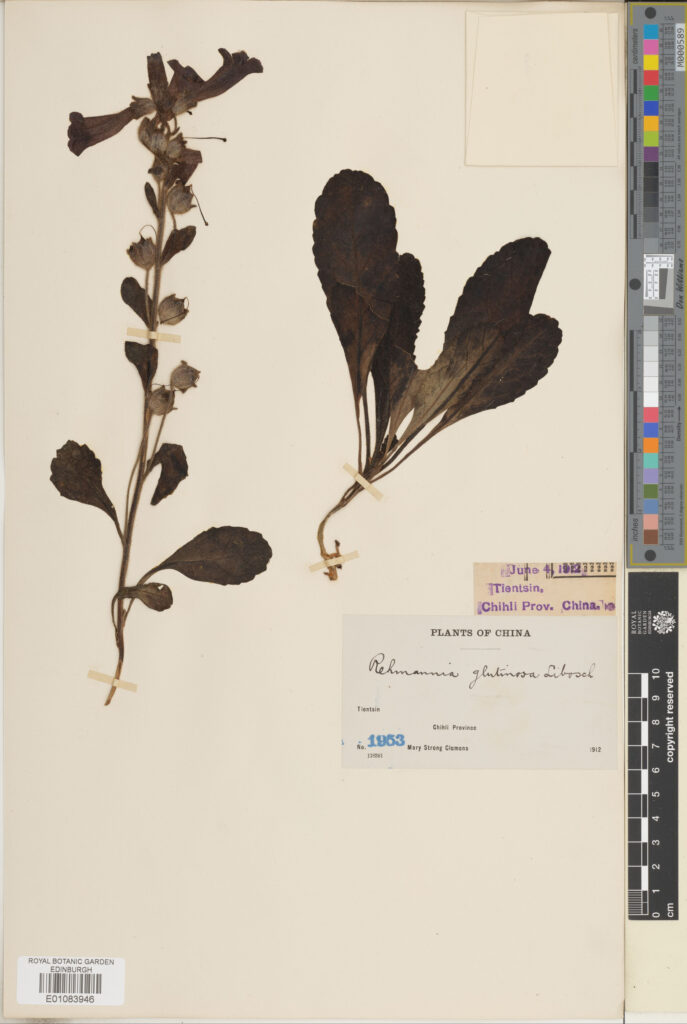The following blog was written by Rebecca Camfield a digitiser in the Herbarium.
Since 2021 we have increased our digitisation capacity with the goal of getting to 1 million specimens imaged by Autumn 2024. Each digitiser is assigned a family of plants to work through. This series of blogs will spotlight the families that have been completed by a member of the team.
The Orobanchaceae are a mostly parasitic family (there are always exceptions!). Most of the genera were originally thought to be in the Scrophulariaceae, but due to studies oftheir genetics in the late 1990s they were moved into their own family. The Orobanchaceae contains 90 genera and approx. 2000 species. They have a global distribution but prefer temperate regions.
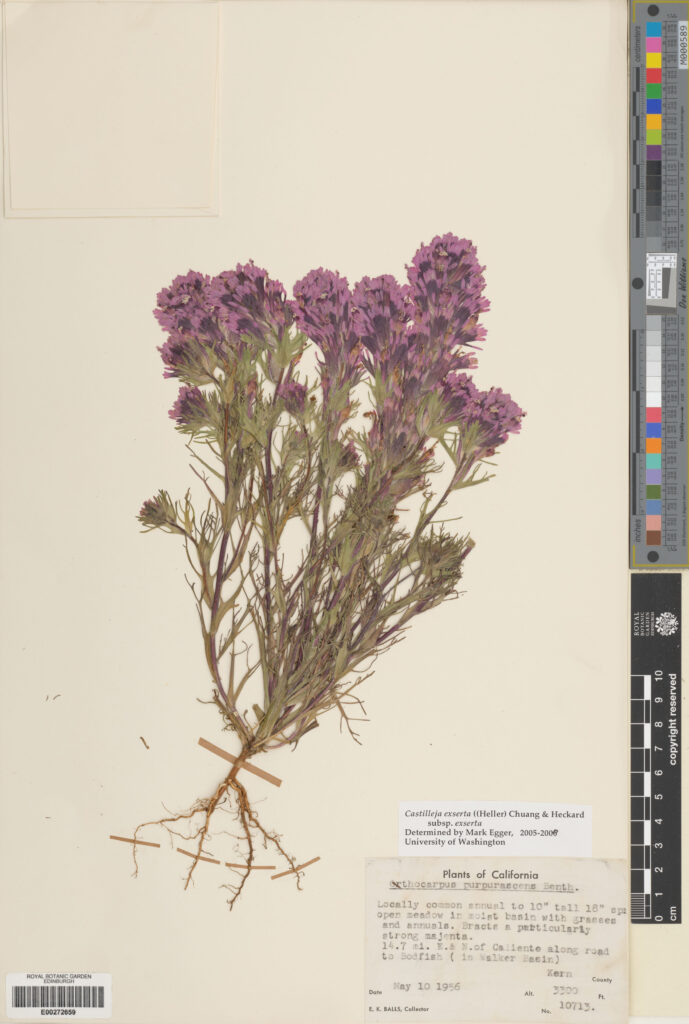
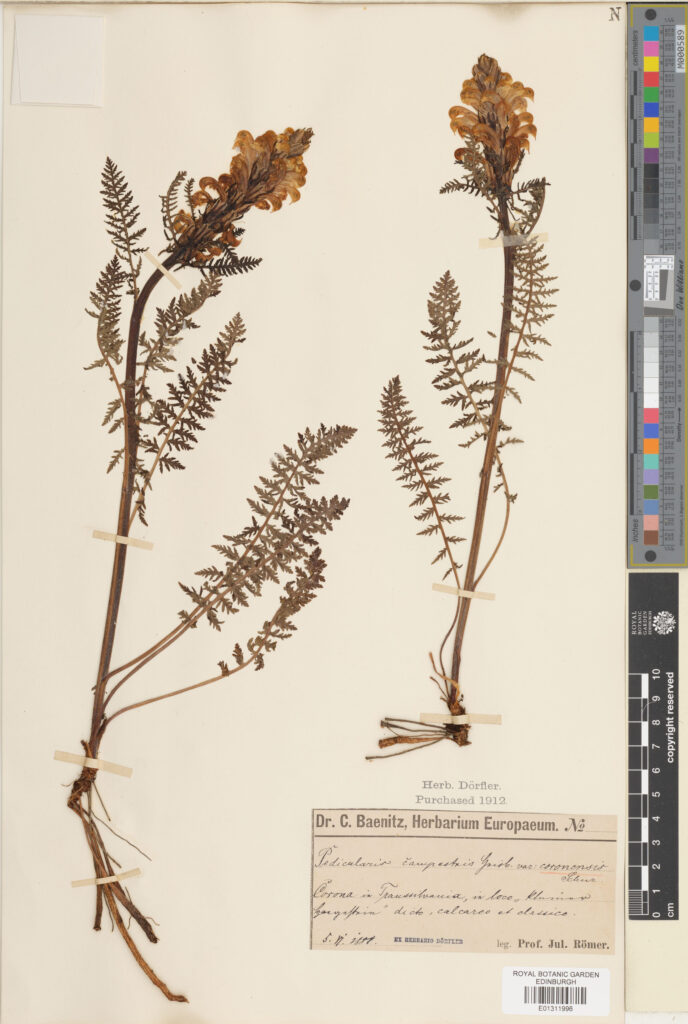
They cover all types of parasitism, such as hemi-parasitic plants that do not depend on a host plant, as seen in Castilleja (Indian Paintbrush), Striga and Pedicularis. There are 3 genera that are not parasitic: Lindenbergia, Rehmannia and Triaenophora. The rest are holo-parasitic and lack chlorophyll. They live by growing attached to the roots of their host and only seen when they reproduce. This is why most herbarium specimens are just a large inflorescence stem. This is also what makes them appealing to herbarium pests. The larvae prefer the inflorescence parts over other parts of the specimens. So having a specimen that is purely that means they are heavily targeted. This is unfortunately seen in our historic Orobanche collections.
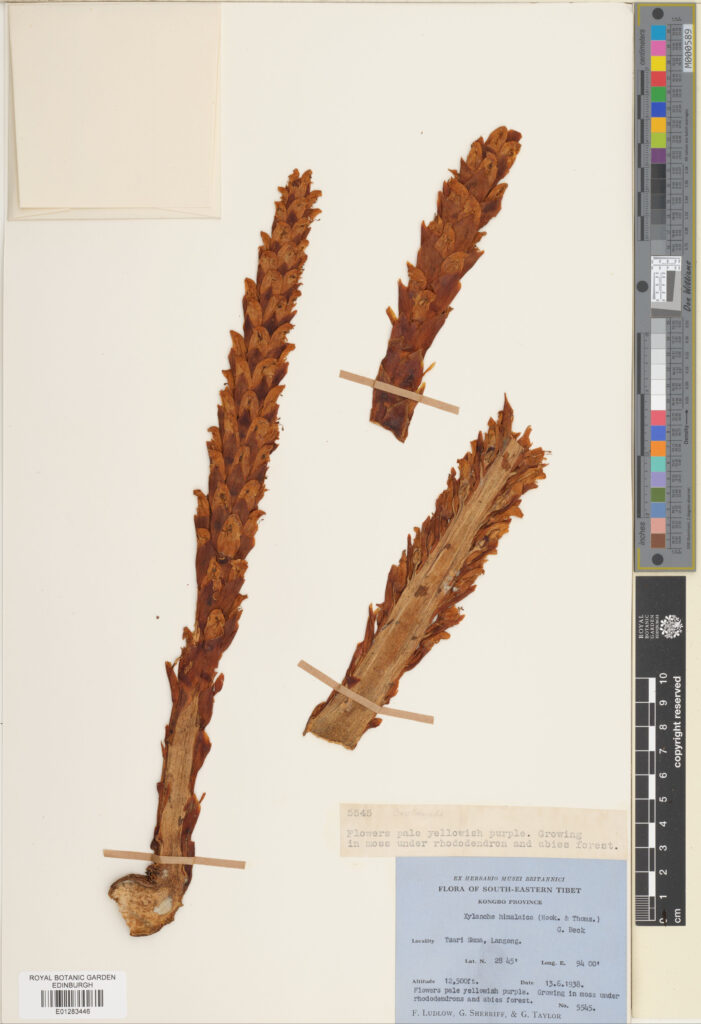
The family have economic importance due to them growing on crop plants such as maize, tomatoes, sugarcane, millet and several more. The main genera that grow on agricultural crops are Orobanche, Phelipanche and Striga.
Our collection
Before mass digitisation we had cataloged 5,877 specimens, following mass digitisation there were 19,204 specimens, of which 498 are type specimens.
The specimens can be viewed through our herbarium catalog here.
Top 5 regions
| No. of Specimens | Herbarium Filing Region |
| 2,464 | India, Pakistan and Bangladesh |
| 1,384 | Britain and Ireland |
| 2,226 | North America |
| 1,928 | Inner China, Korea and Taiwan |
| 1,392 | West Asia |
This distribution of specimens matches with the family’s preference of temperature regions in Eurasia and North America.
Top 5 Genera
| No. of Specimens | Genus |
| 6,298 | Pedicularis |
| 3,171 | Euphrasia |
| 1,739 | Orobanche |
| 1,187 | Melampyrum |
| 950 | Castilleja |
It would be nice to improve our collections of some of the lesser represented genera and species but unless they are in flower they are hard to find.
Interesting specimens
Due to many species being parasitic, the host plant is sometimes collected as well and appears on the same herbarium sheet. This can be larger than the parasite collected, as seen in this example of Orobanche aegyptiaca Pers. growing on Limonium.
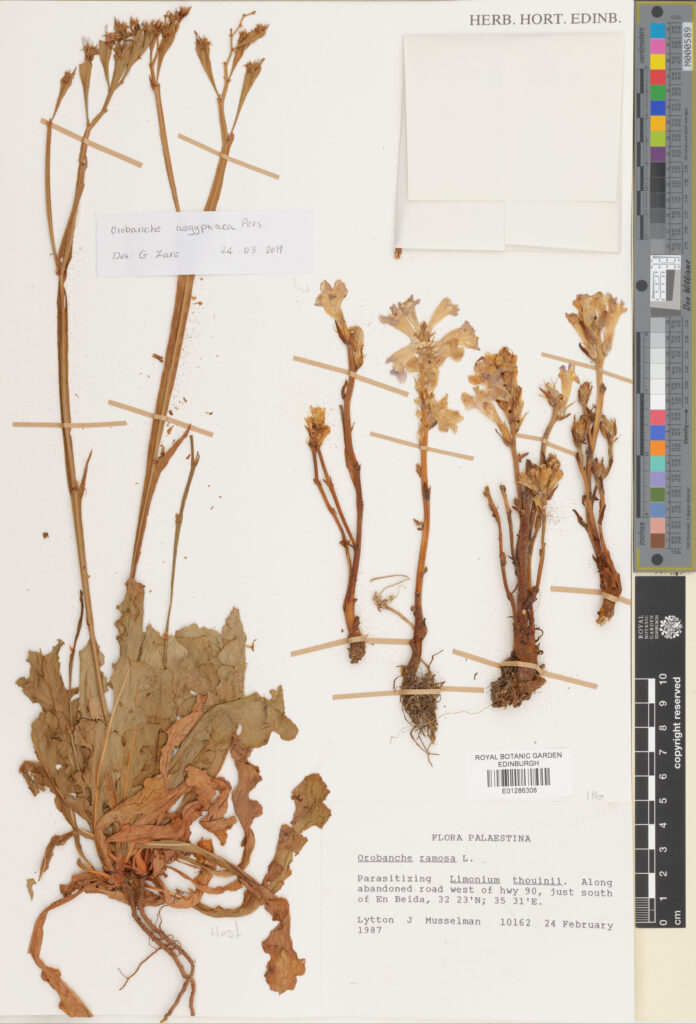
Rehmannia is one of the non-parasitic members of the Orobanchaceae
